
.webp)
Living with scoliosis often means navigating daily discomfort, stiffness, or uneven posture. Amid all this, figuring out which exercises are actually safe for your body can feel overwhelming. Yoga, however, offers a gentle, supportive way to ease symptoms without adding strain.
Yes, when practiced mindfully and with proper modifications, yoga for scoliosis can be very beneficial. Its gentle and restorative approach helps improve spinal health in a safe, low-impact way.
In this guide, you’ll discover 8 beginner-friendly yoga poses for scoliosis that release tension, build strength safely, and nurture better alignment while ensuring maximum safety for you and your body.
Scoliosis is more than just a “curved spine.” It’s a condition where the spine curves sideways, often creating an S- or C-shape. For some, it’s barely noticeable. For others, it can lead to uneven shoulders, rib imbalances, or chronic back discomfort. While the exact cause isn’t always known, most cases are mild and can be managed well with the right care.
It’s completely normal to feel unsure about starting yoga with scoliosis. You might wonder: Are certain poses even safe? Could I injure myself with incorrect form?
These are valid concerns, but when done mindfully, yoga is one of the safest and most effective ways to manage scoliosis. With the right modifications, it can ease discomfort, improve posture, and enhance mobility.
Studies have shown up to 49% improvement in spinal curvature when individuals consistently practiced the side-plank pose on their weaker side. Other research highlights yoga’s ability to reduce back pain and improve posture in people with scoliosis.
The key is to avoid deep backbends, extreme twists, and forced symmetry—focusing instead on gentle strengthening and mindful stretching. For maximum safety and benefit, consider working 1-on-1 with a yoga coach trained in scoliosis care. Book a free session today!
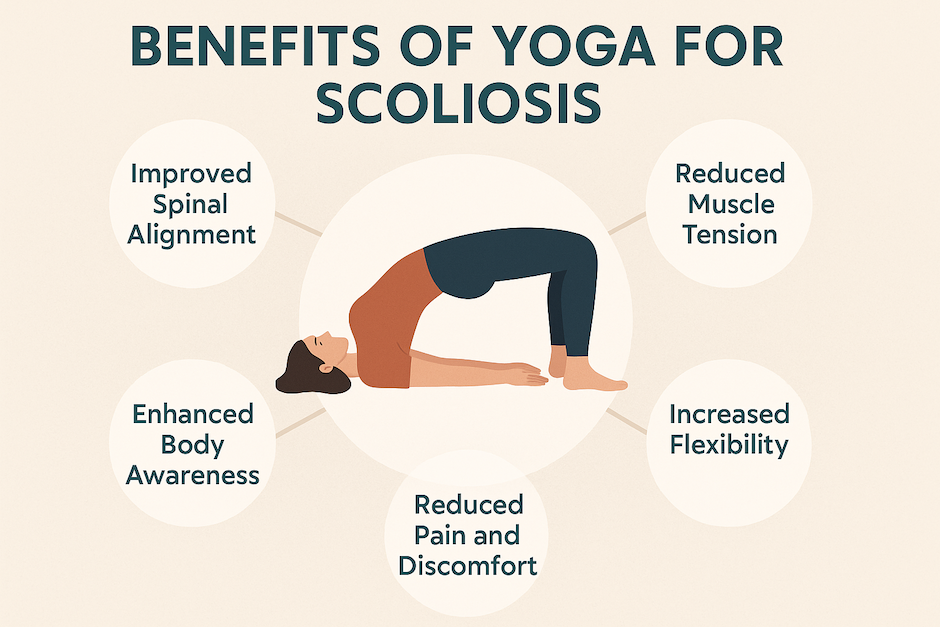
When practiced safely, yoga for scoliosis offers several meaningful benefits. Here’s how it can support your spine:
Gentle yoga poses help lengthen the spine and strengthen supporting muscles, encouraging better alignment over time. Studies show that practicing yoga for 20 weeks can significantly improve spinal alignment and enhance back muscle strength.
Scoliosis often leads to muscle imbalances—tight on one side, overstretched on the other. Yoga uses slow, mindful stretches to release chronic tightness, helping your body feel more open and at ease.
One of yoga’s greatest strengths is teaching you to tune into your body. Over time, you’ll become more aware of your posture habits, learning gentle corrections that make day-to-day life more comfortable.
Yoga improves flexibility in a controlled, safe way—without forcing the body into uncomfortable positions. With simple modifications, you’ll safely expand your range of motion, especially in tight areas like the hips, back, and shoulders.
Consistent yoga practice can reduce overall back pain and discomfort, calming tense muscles and supporting your spine’s natural curves.
Yoga can be a safe and supportive way to ease scoliosis symptoms, especially when you know how to approach each pose. Below, you’ll find simple, beginner-friendly yoga poses for scoliosis with step-by-step instructions and gentle modifications to ensure you stay safe and comfortable:
While these poses are safe and effective, always consult with your healthcare provider before starting any new exercise routine, and work with a qualified yoga instructor familiar with spinal conditions like scoliosis.
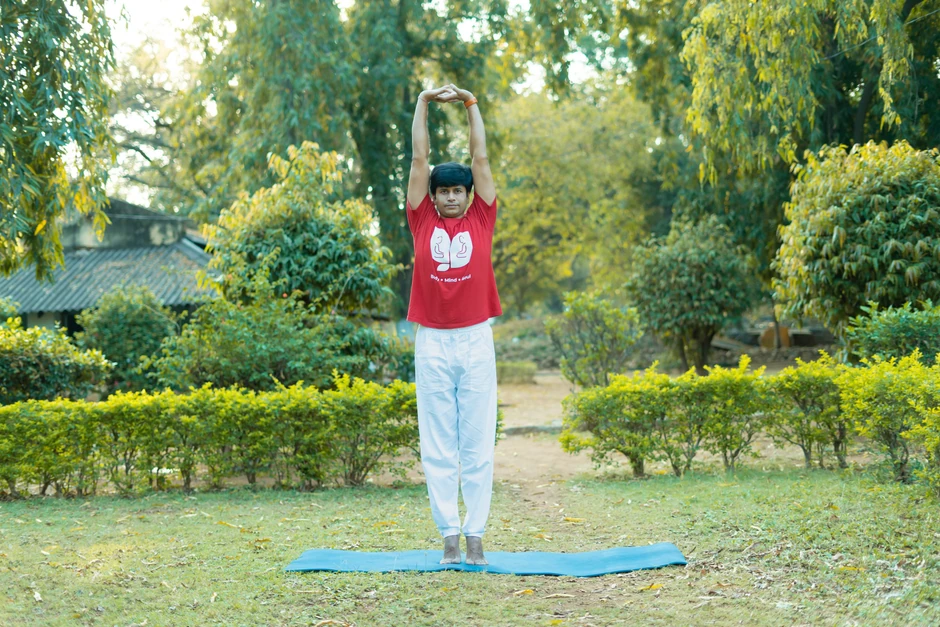
This pose helps you develop awareness of your spinal alignment and improves posture.
Scoliosis Modification: Stand near a wall for extra support and imagine “growing taller” through the crown of your head.
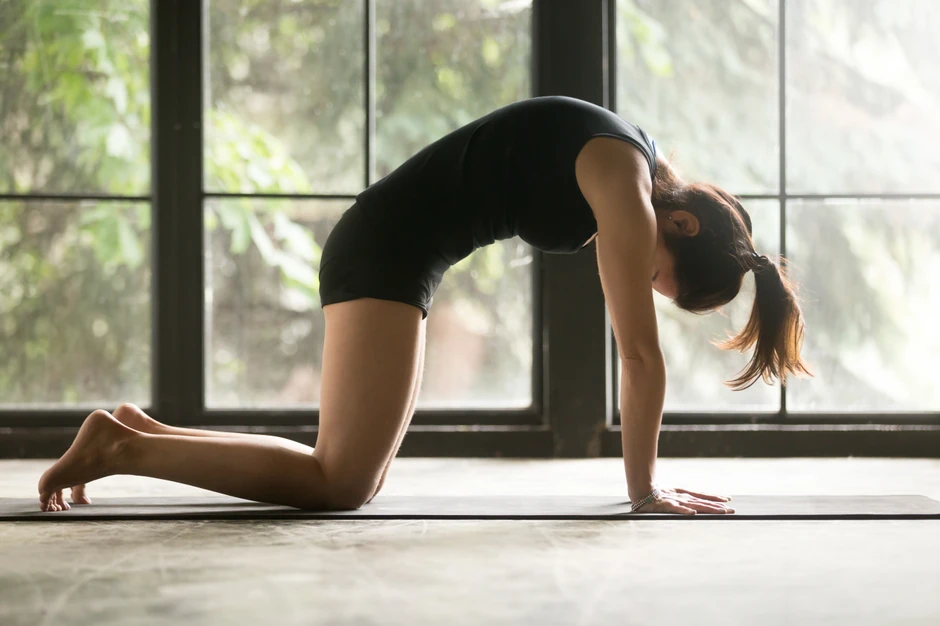
This flow gently increases spinal mobility and eases stiffness.
Scoliosis Modification: Move slowly and keep your range of motion smaller, especially if certain areas feel tight.
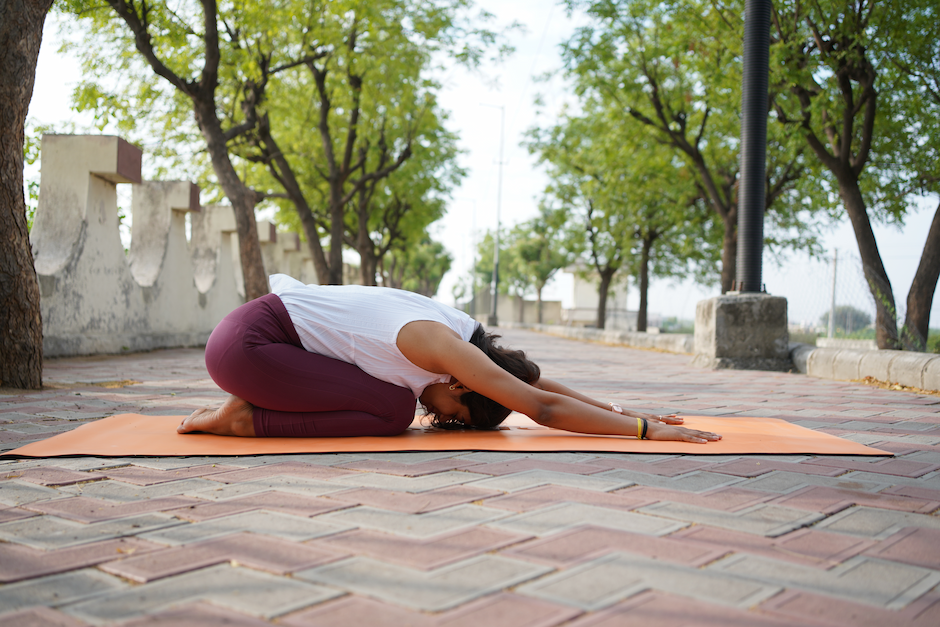
This pose offers a gentle spinal stretch and promotes relaxation.
Scoliosis Modification: Place a bolster or folded blanket under your chest or forehead, and turn your head to the more comfortable side.
This gentle stretch releases tension on the tighter side of your spine.
Scoliosis Modification: Hold the stretch longer on your tighter (concave) side and shorter on the opposite side.
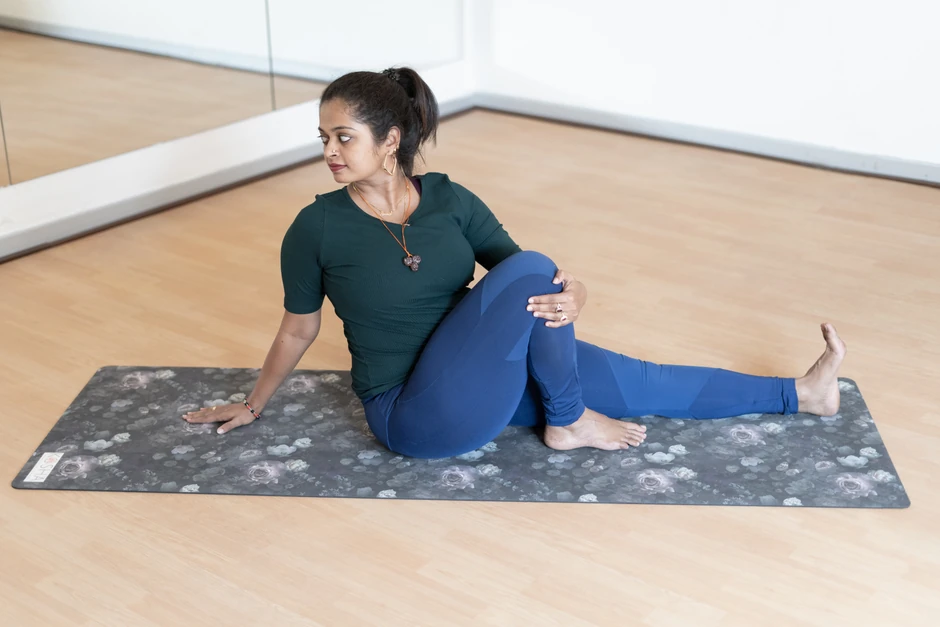
This gentle twist improves spinal rotation without force.
Scoliosis Modification: Use a bolster or yoga block behind your back for gentle support; twist only as much as feels natural.
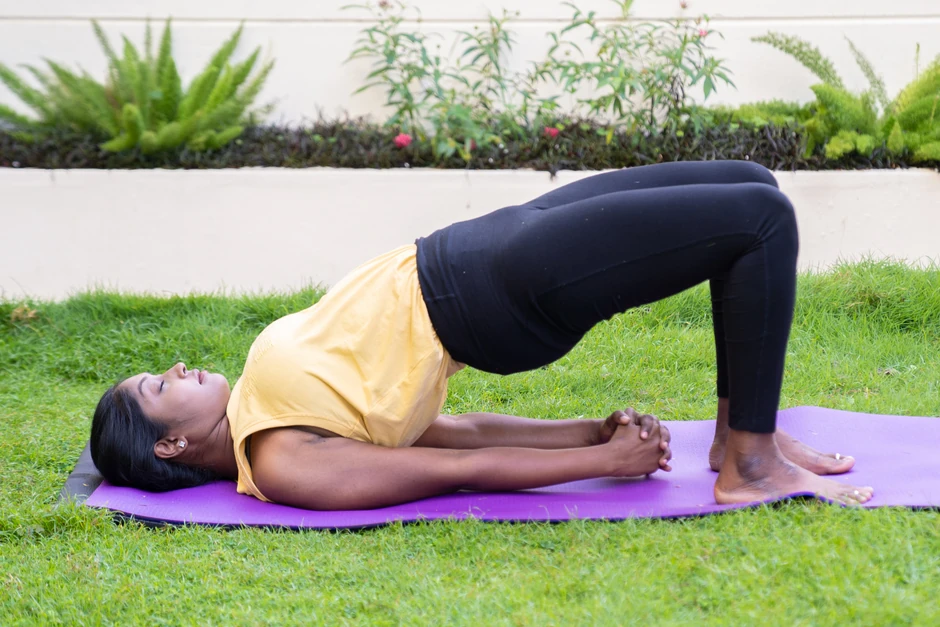
This pose strengthens back muscles and promotes balanced posture.
Scoliosis Modification: Place a yoga block under your sacrum for support or lift just halfway.
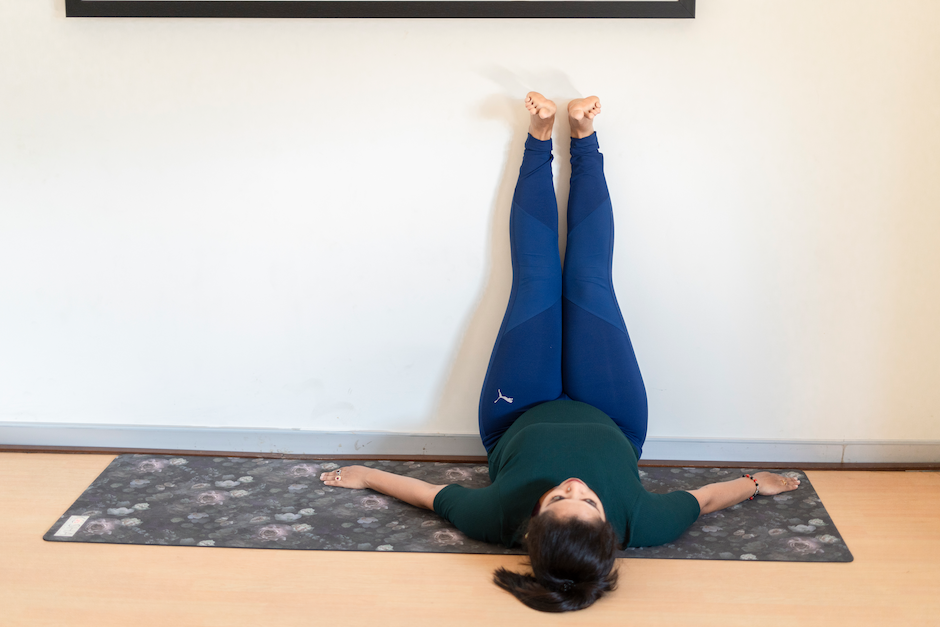
This restorative pose promotes spinal decompression and deep relaxation.
Scoliosis Modification: Place a bolster under your hips or a folded towel under natural spinal curves.
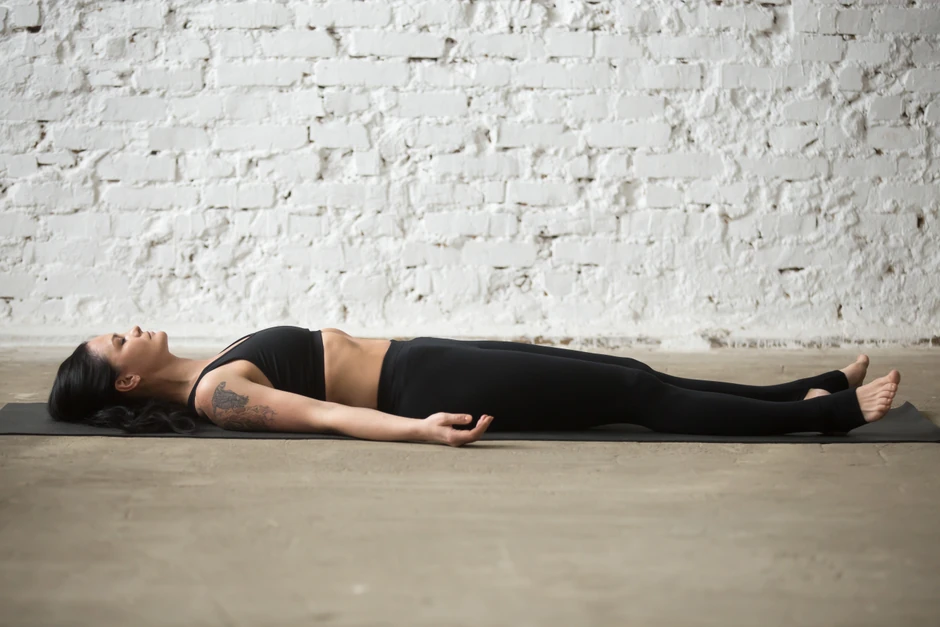
This ultimate relaxation pose calms the nervous system and integrates the practice benefits.
Scoliosis Modification: Adjust props until you feel completely at ease.
When done under the right guidance, with proper form and alignment cues, especially with scoliosis, these poses can be extremely beneficial. Book your free 1-on-1 session today!
Not sure where to start? This simple 15-minute yoga routine is designed to gently stretch, strengthen, and relax your spine. All you need is a mat, a wall, and some optional cushions or bolsters for support.
1. Centering (2 minutes):
2. Mobility (5 minutes):
3. Strengthening (4 minutes):
4. Relaxation (4 minutes):
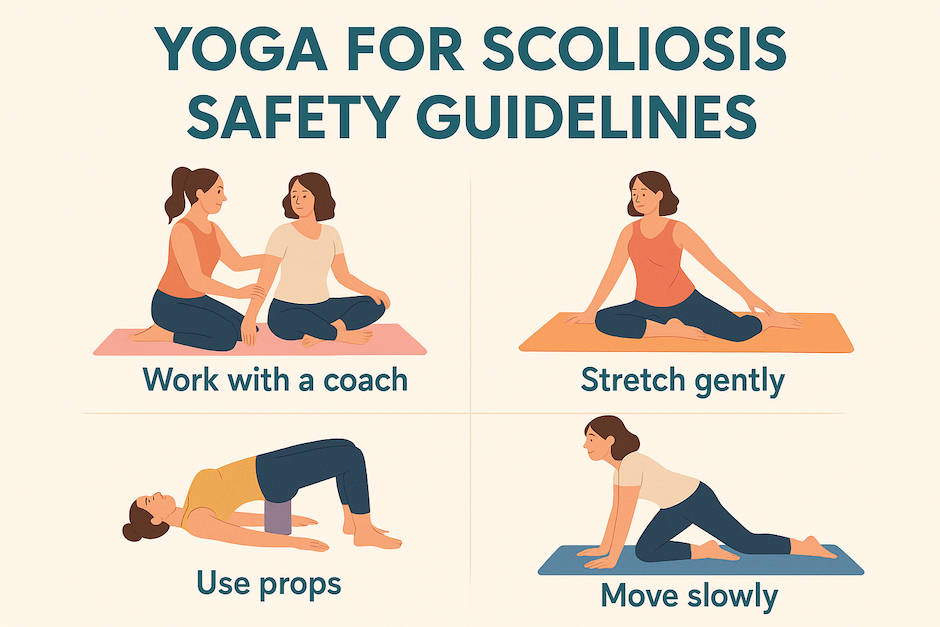
Your body is unique, especially when it comes to scoliosis. Practicing yoga safely means listening closely to your body, avoiding strain, and knowing when to seek professional guidance.
Living with scoliosis doesn’t mean you have to live in discomfort or avoid movement. With the right guidance and gentle, therapeutic yoga practice, you can experience less tension and improved posture, all while staying safe.
Remember: progress is personal. It’s about listening to your body, building consistency, and making mindful choices—not chasing “perfect” alignment.
The coaches at MyYogaTeacher believe in supportive and restorative yoga that empowers you. They can personalize your practice and adapt poses to your needs. Book a free 1-on-1 session today, and feel the difference yourself!
Yes, yoga can be good for scoliosis when practiced safely with proper modifications. Gentle poses help improve posture, reduce muscle tension, and support overall spinal health, especially when guided by a qualified instructor.
No! When practiced mindfully and correctly, yoga is not bad for scoliosis. Avoid deep backbends, extreme twists, and forced symmetry. Focus on gentle stretches, postural awareness, and strength-building exercises to safely support your spine.
The best yoga poses for scoliosis include:
Each pose offers gentle stretches and postural balance while being safe for spinal curves.
Most people notice benefits within 2 to 4 weeks, such as improved body awareness and reduced stiffness. With consistent practice over 2-3 months, improvements in posture, flexibility, and comfort become more noticeable.
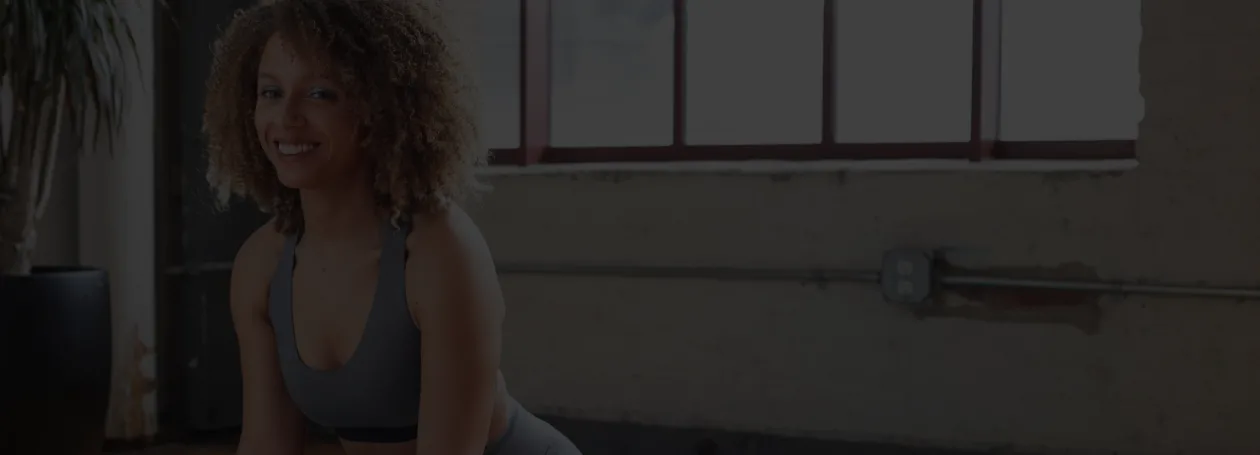
Receive personalized guidance tailored to your unique fitness goals, live with a dedicated coach—no credit card required.